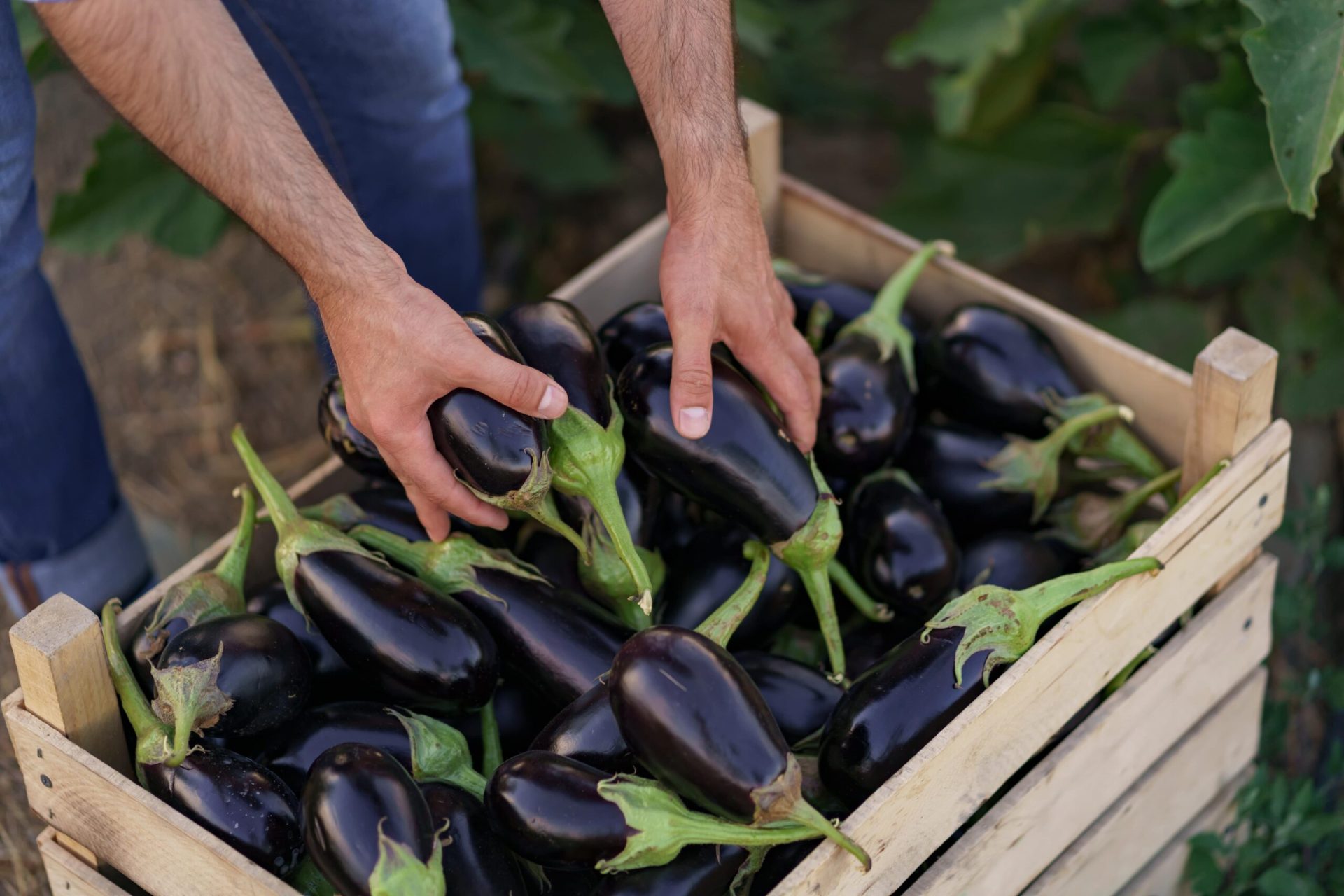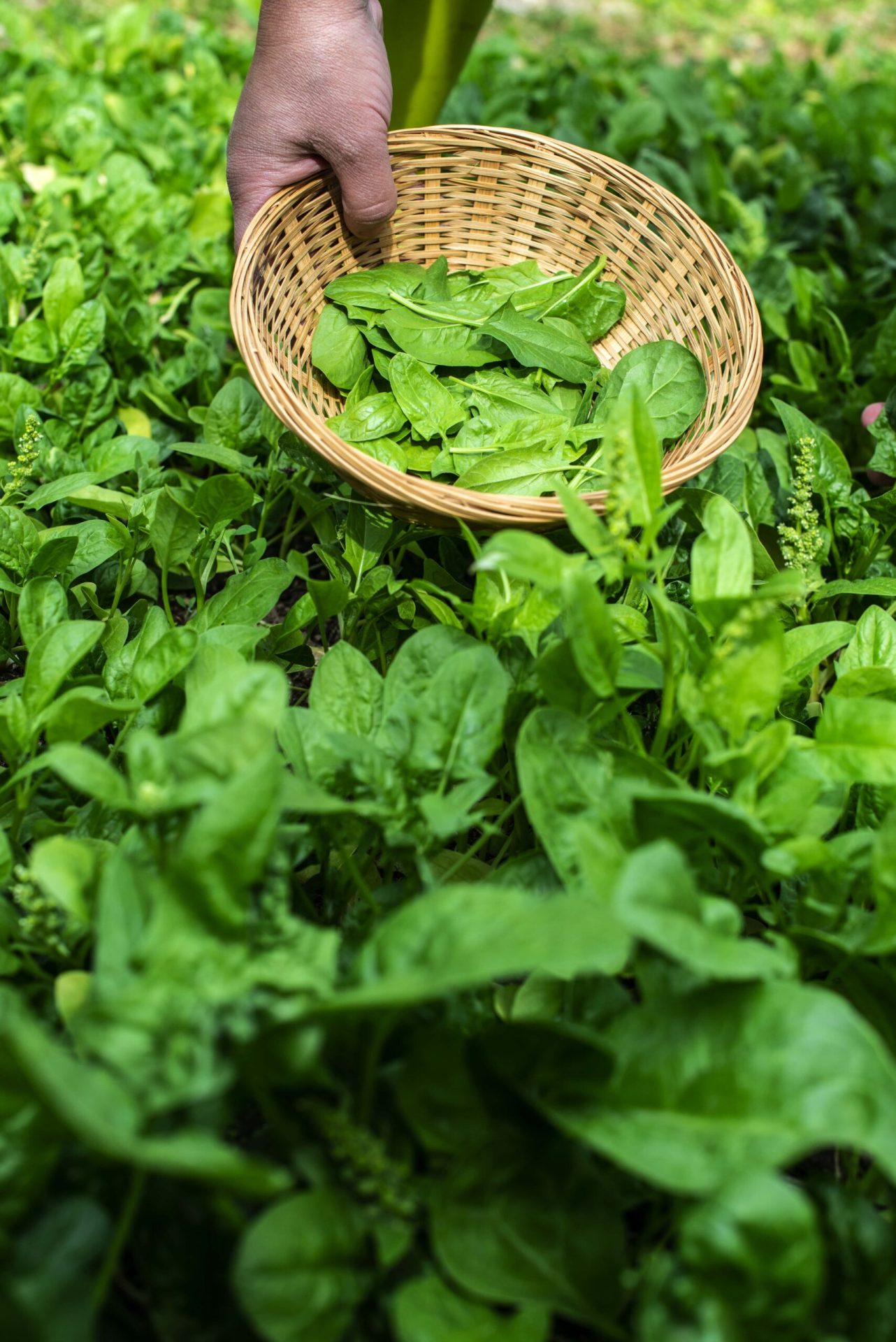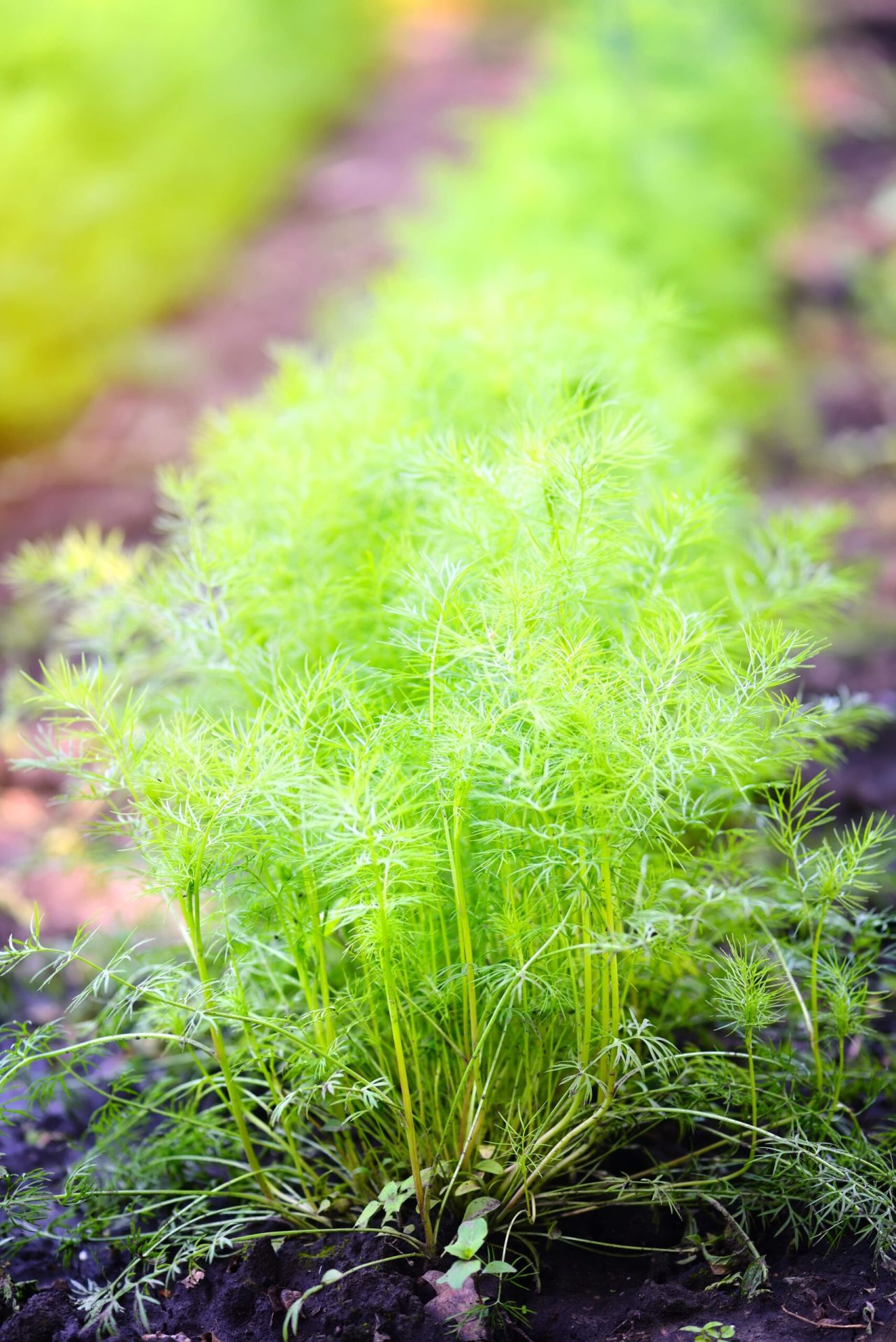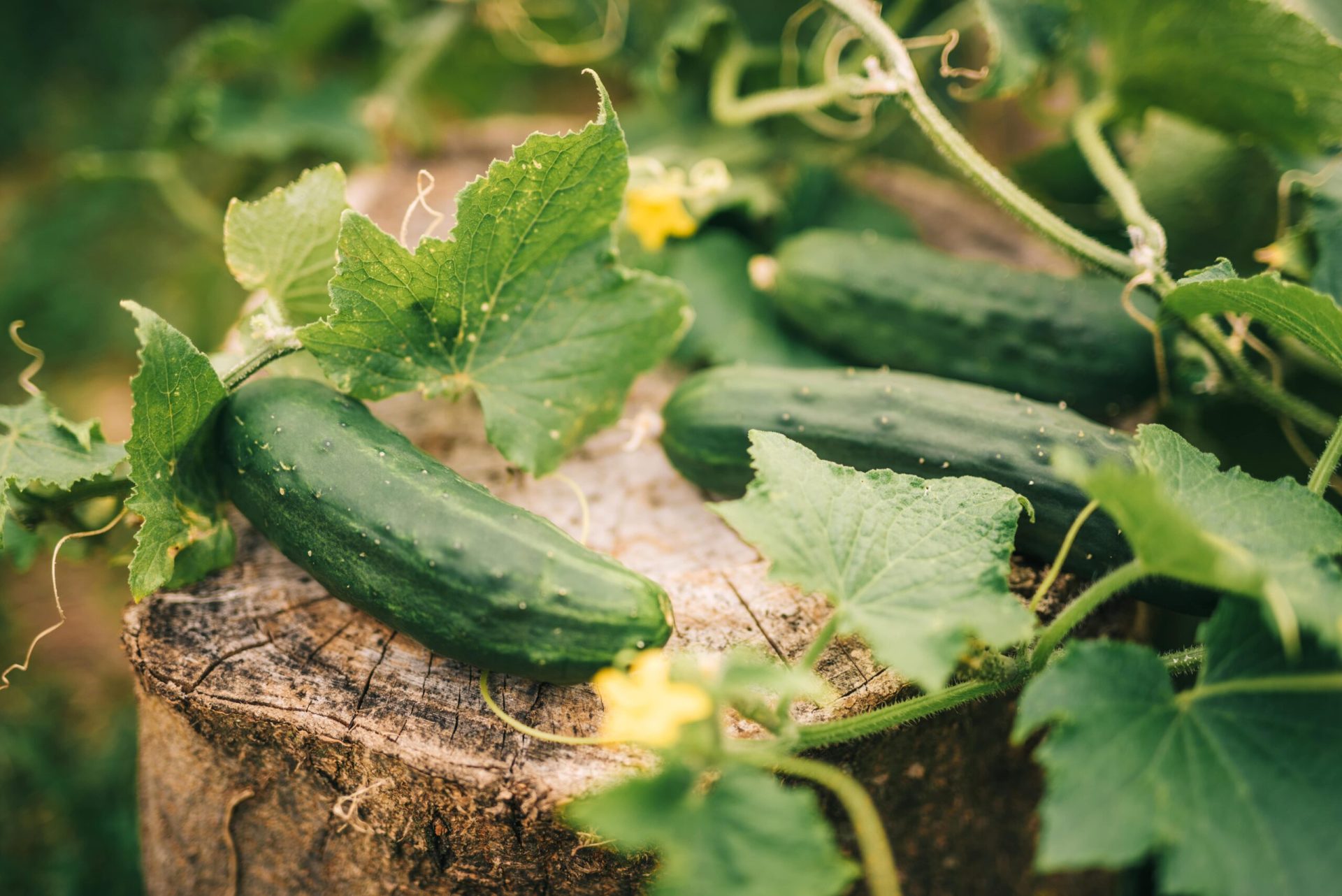Also known as brinjal or aubergine, eggplants grow well and look attractive in containers, in-ground gardens, or raised beds. Their various uses in preparing food dishes make them a staple in just about every home garden.
If you are planning to grow this amazing vegetable, this guide provides everything you need to know about growing eggplant. We will walk you through all the stages of growing eggplants and provide useful tips to maximize your harvest.
Basic Requirements for Growing Eggplants
Eggplants like warm and fertile soil, along with consistent watering. Proper growing conditions for eggplants will reward you with healthy and fresh produce. From location, light, water, climate, and temperature to soil, each element is necessary for successfully growing eggplants.
1. Location
Eggplants require a sunny location and well-draining soil that’s rich in organic matter. You should rotate your eggplant crop each season to help prevent soil-borne pests and diseases.
2. Water
Eggplants need consistent and constant watering throughout the summer season. You can use automated drip watering or soaker hose to maintain moisture levels in the soil.
3. Climate & Temperature
These sun-loving plants have zero tolerance for frost. They require warm ambient temperature to thrive. Temperatures below 50°F can cause the plant to drop its flowers.
Their ideal growing temperature is 70-80°F. People in cooler zones should grow eggplant in a greenhouse or low tunnel to increase yield. Another option: Purchasing plants and transplanting in mid-to-late June.
4. Soil Quality
Eggplant requires well-drained and fertile soil to thrive. Choose loamy or sandy soil, which contains organic components. You can enhance soil quality by mixing in rotted manure, worm castings, fertilizers, or compost. For growing eggplants in containers, choose a well-draining potting mix with added fertilizer.
When amending soil, add it in before transplanting seedlings. Mix amendments deep into the soil, about 12 inches deep, and roughly one week before you plant. Maintain the soil pH of 5.8-6.5 for proper growth.
Eggplants prefer slightly acidic to neutral soil with a pH level between 6.0 and 7.0. This pH range is generally suitable for most garden vegetables. If your soil is too acidic (below pH 6.0), you can add lime to raise the pH. If your soil is too alkaline (above pH 7.0), you can add sulfur or peat moss to lower the pH. Maintaining the correct soil acidity can help ensure that your eggplants grow well and produce healthy fruit.

Eggplant Growing Stages
Here’s a quick look at the growing stages of eggplants:
- Eggplant Seeds: Start seeding indoors about 6-8 weeks before the last frost date. Put 3-4 seeds in each seed-starting pot or container 0.4 inches deep. Cover it with plastic wrap to retain heat and moisture.
- Seed Germination: Seed germination for eggplant takes about 10-15 days. After this, you will notice small first leaves peaking up through the soil. After two weeks of germination, seedlings will produce leaves.
- Root and Leaves Growth: Once seedlings develop their root systems and grow leaves, they enter the leaf’s growth stage. In this stage, young eggplant plants grow rapidly and produce large dark green leaves. Keep the soil moist to ensure seeds have a sufficient amount of water. In this stage, begin to harden-off the plants by exposing them to brief periods of sunlight each day. The rate of growth during this stage can vary, but it’s typical for the young plants to grow steadily, especially if they have the right conditions.
- Flowering Eggplants: Once eggplant matures, it begins to flower. The plant produces beautiful white or purple flowers, which turn into the fruit of the plant. Eggplants generally reach flowering stage within 60 days.
- Flower Pollination: After the flowers bloom, they enter the pollination stage. Owing to their self-pollinating nature, they naturally pollinate, and therefore, you can grow a single eggplant on its own.
- Fruit Development: The flower develops into a fruit. It grows and matures with time, finally reaching its full color and size. As it matures, the fruit changes its appearance.
- Harvest: Harvest fruit at the right time to maintain its best flavor and texture. Eggplant typically requires 100-120 days from seed until they’re ready for harvest. If you transplant, typically you can cut this to about 60-85 days.
PRO TIP: Use stakes or trellis to support eggplants as they grow and develop.
Tips to Maximize Eggplant Harvest
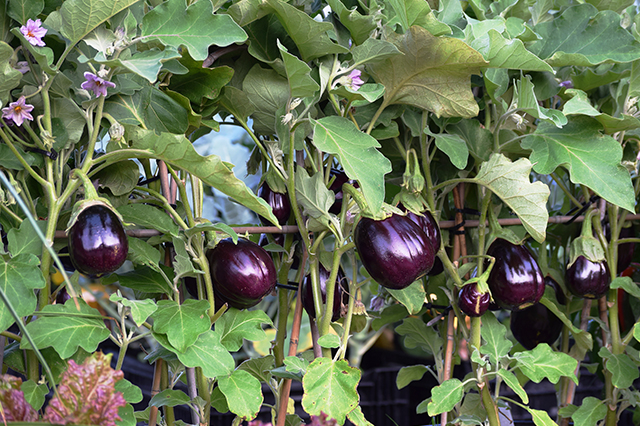
- Avoid planting seedlings too early, as it might impact their harvesting time. They grow well in a warm environment.
- Eggplants like warmth, which also applies to air and soil temperature. To speed up growth and increase their harvest, place a black plastic over the garden soil a few weeks before planting.
- To enhance harvest, you should amend soil yearly and mix in a proper amount of organic matter and compost.
- Maintain proper spacing between plants to avoid the risk of fungal diseases. Eggplants typically require 18-36 inches in spacing depending on the variety.
- Spread mulch around your plants as it will keep the soil warm in spring and cool in summer. This helps retain soil moisture, which reduces watering requirements.
- he growing space as pollination helps improve the fruit size. Marigolds and other flowering plants will help attract pollinators.
- Properly pruning your plants will help produce flowers and create fruits for harvest. Remove suckers as they appear, and thin branches to increase airflow.
- Like other nightshade plants, eggplant is a heavy feeder. You should plan to fertilize your eggplants at least three times during the growing season. Add organic fertilizers or compost to eggplants for proper growth.
- By giving plenty of water to eggplants, you can increase their harvest. You should provide one or two inches of water per week for eggplants to thrive well.
- Protect your plants against pests. Cover plants with a net in the early stages to avoid pest attacks.
- Harvesting eggplants at the right time ensures they taste right. As eggplants grow, they become bitter, so picking them when they are small is better.
Final Thoughts
Eggplant is a vibrant crop that produces in a lot of produce if you provide warmth and water to it throughout the summer. Knowing how to grow eggplants in containers or your garden can prove a worthy addition to your homegrown harvest. The eggplant growing stages and growing needs mentioned here will guide you about how to grow this veggie in your garden space.

